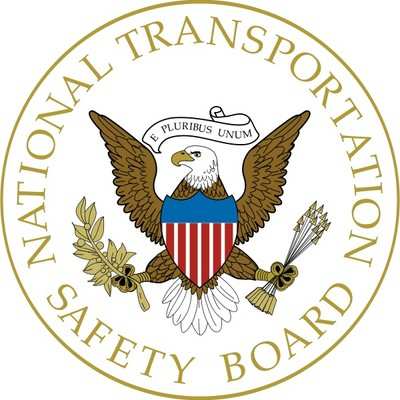Tue, Sep 10, 2024
Fragmented Sections Of The Outboard Left Wings Of Both Airplanes Were Found In A Field Below The Point Where The Two Flight Tracks Merged
Location: Longmont, Colorado Accident Number: CEN22FA424
Date & Time: September 17, 2022, 08:53 Local Registration: N2117Y (A1); N255BF (A2)
Aircraft: Cessna 172S (A1); Sonex Aircraft Xenos (A2) Aircraft Damage: Destroyed (A1); Destroyed (A2)
Defining Event: Midair collision Injuries: 2 Fatal (A1); 1 Fatal (A2)
Flight Conducted Under: Part 91: General aviation - Instructional (A1); Part 91: General aviation - Personal (A2)

Analysis: The flight instructor and student pilot took off in a Cessna airplane from their home airport and proceeded north to a practice area to perform practice maneuvers. The Sonex pilot departed from an airport east of the practice area about 5 minutes earlier and proceeded westbound toward the vicinity of the Cessna. Both airplanes climbed to 7,000 - 7,500 ft mean sea level (msl) and operated under visual flight rules (VFR). When the Cessna reached the practice area, it made a left 360° turn consistent with a clearing turn, which according to the flight school was standard procedure. On completing the turn, the Cessna proceeded eastbound. The Sonex approached the same area from the east and tracked west-northwest toward the vicinity of the Cessna. The flight track data showed the two airplanes come together at an altitude of about 6,939 ft msl and subsequently showed both airplanes rapidly descend.
Fragmented sections of the outboard left wings of both airplanes were found in a field below the point where the two flight tracks merged. Both airplanes came down in fields about 2,400 ft apart and were destroyed on impact with terrain. Postaccident examination of both airplanes showed no preaccident failures or malfunctions that would have precluded their normal operations.
The Cessna was equipped with automatic dependent surveillance - broadcast (ADS-B) “in/out” equipment and transmitted ADS-B data during the accident flight. The Sonex did not transmit ADS-B data during the accident flight; ATC records indicated the Sonex last transmitted ADS-B data on July 14, 2022. An examination of the GPS and transponder from the Sonex determined that the units were configured to not transmit position data via ADS-B. Investigators were unable to determine the exact configuration of the cockpit traffic displays for the Cessna. The sun was in the east (108o) about 24° above the horizon. A visibility study showed that the
respective airplanes would have traversed the respective windscreens from right to left and left to right over the 60 seconds before the collision. However, the instrument panel, canopy frame, compass, and sun glare would have obscured the view of each pilot presenting challenges to detecting the respective airplanes.
Toxicology specimens from the student pilot revealed Cetirizine in liver and muscle tissue. Cetirizine is an antihistamine available over the counter and is used to treat allergy symptoms. It may cause drowsiness. However, it is uncertain whether the student pilot was experiencing any sedating effects of this medication at the time of the accident. Given the circumstances of the accident, including the presence of a qualified flight instructor, it was unlikely that the student pilot’s Cetirizine use contributed to the collision.
Probable Cause and Findings: The National Transportation Safety Board determines the probable cause(s) of this accident to be -- The pilots’ inability to see and avoid each other, resulting in a midair collision.
More News
“These new aircraft strengthen our ability to respond quickly, train effectively and support communities nationwide. Textron Aviation has been a steadfast supporter in helpin>[...]
From 2011 (YouTube Edition): Rugged, Legendary, STOL Twin Makes A Comeback The de Havilland Twin Otter is an airplane with a long history, and it gained a reputation as a workhorse>[...]
A Wind Gust Lifted The Right Wing And The Airplane Turned To The Left Analysis: The pilot was departing from a 2,395-ft-long by 50-ft-wide turf runway. The pilot reported that afte>[...]
Have A Story That NEEDS To Be Featured On Aero-News? Here’s How To Submit A Story To Our Team Some of the greatest new stories ANN has ever covered have been submitted by our>[...]
Braking Action Advisories When tower controllers receive runway braking action reports which include the terms “medium," “poor," or “nil," or whenever weather con>[...]
 Aero-News: Quote of the Day (12.18.25)
Aero-News: Quote of the Day (12.18.25) Classic Aero-TV: Viking Twin Otter 400--Bringing the DHC-6 Back Into Production
Classic Aero-TV: Viking Twin Otter 400--Bringing the DHC-6 Back Into Production NTSB Final Report: Rans Employee Flying Club Rans S-6ES Coyote II
NTSB Final Report: Rans Employee Flying Club Rans S-6ES Coyote II ANN FAQ: Submit a News Story!
ANN FAQ: Submit a News Story! ANN's Daily Aero-Term (12.18.25): Braking Action Advisories
ANN's Daily Aero-Term (12.18.25): Braking Action Advisories



